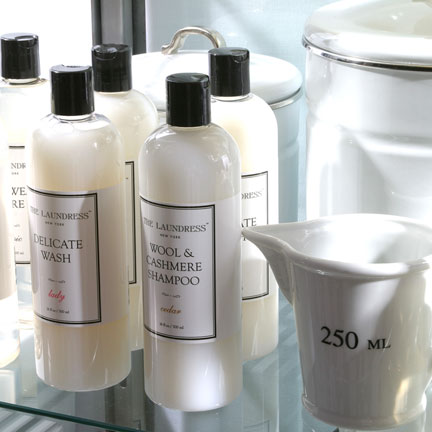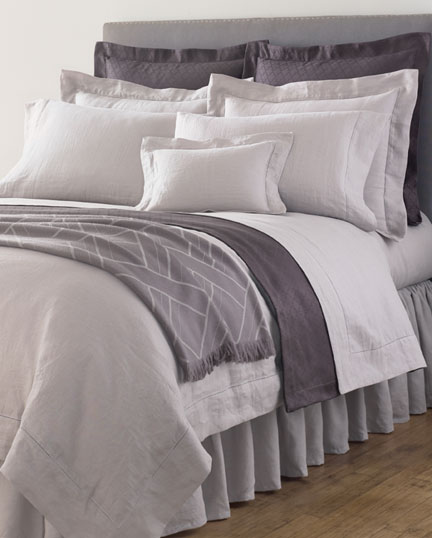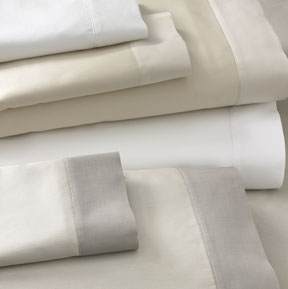Save to...
How To Care For Your Bed Linens
Sferra, known for their fine bed linens, recently sent us some great information on the best way to care for your linens. Luxury bed linens are an investment – keep them in top condition for years with these tips.
Most bed linens are made from natural fibers such as cotton or linen. These are designed to be washed at home for ease of cleaning.
Pre-wash your linens before the first use. Separate your linens from other items in the wash, especially those containing polyester, which tends to create pilling, and items with heavy zippers, which can damage the fabric. Separate light and dark colors.
Avoid overloading the washing machine, which can cause fibers to break down from excessive abrasion and agitation. You can wash most linens in warm water on a gentle cycle with a cold-water rinse, but be sure to check the care label.
Use a mild detergent without added bleach, whiteners, or fabric softeners. Do not pour detergent directly on textiles; rather, add it to the water as the wash tub fills or dilute detergent with water, then add linens. Unless linens are very soiled, you only need to use half the recommended amount of detergent.
We recommend LeBlanc Linen Wash and The Laundress Signature Detergent. Both are concentrated, so you use less than regular detergents. The are made from natural ingredients and safe for use in newer, high-efficiency washing machines. And they smell wonderful.
If your bed linens need bleaching, it should be done with care. A good alternative is a special detergent for white laundry.
Chlorine bleach will weaken fibers and cause the fabric to yellow. If white fabrics need bleaching, use only an oxygen-based bleach. While line drying outdoors is gentle, safe, and imbues linens with the fresh scent of the outdoors and natural bleaching of the sun, it is not always practical. You can machine dry most linens on low heat, but be sure to check the care label.
Shake out damp linens before placing in the dryer. Never use a high heat setting, which will weaken the fibers, damage the fabric, increase shrinkage, and shorten the life of your linens. Remove items from dryer promptly, while still damp, to minimize wrinkles. Smooth and fold, or press with an iron, if desired.
Ironing is optional. Linen bedding, like this Classico Vintage, is designed to have a relaxed look, and doesn’t need ironing to look great.
Check to make sure your steam iron is clean – mineral deposits could cause brown spotting. Iron linens while still damp. To restore the lustrous face of sateen fabrics, iron on the reverse side. For embroidered linens, iron them on the reverse side atop a towel to preserve the three-dimensional effect of the embroidery. Use a press cloth to protect delicate lace and cutwork.
We love to use scented linen water for ironing – it moistens the fabric to make ironing easier, and it makes linens smell fresh.
All natural fibers will shrink to some extent, but in most instances we generously overcut our products to allow for shrinkage. Do not wash or, especially, dry linens on a hot setting, which is most likely to damage the fabric and intensify shrinkage. Always follow instructions on care label.
Store bed linens in a cool, dry, well-ventilated area. Linens stored long-term should be wrapped in white cotton, muslin (old pillow cases work well) or acid-free paper. Avoid storing linens in plastic bags or boxes, which can cause permanent yellowing; natural fibers need to breathe. Cedar chests can also yellow or streak fabrics.
A great alternative is to use cedar scented drawer liners – the cedar chips are enclosed in a layer of natural fabric, so they won’t harm your linens but will keep moths away.
It’s easy to care for your fine linens, and it will ensure that they stay luxurious for generations. What are your linen care tips?




